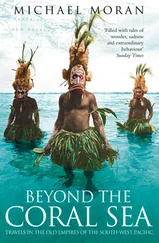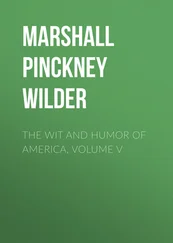The chain of calcareous mountains of the Brigantine and the Cocollar sends off a considerable branch to the north, which joins the primitive mountains of the coast. This branch bears the name of Sierra de Meapire; but towards the town of Cariaco it is called Cerro Grande de Curiaco. Its mean height did not appear to be more than 150 or 200 toises. It was composed, where I could examine it, of the calcareous breccias of the sea-coast. Marly and calcareous beds alternate with other beds containing grains of quartz. It is a very striking phenomenon for those who study the physical aspect of a country, to see a transverse ridge connect at right angles two parallel ridges, of which one, the more southern, is composed of secondary rocks, and the other, the more northern, of primitive rocks. The latter presents, nearly as far as the meridian of Carupano, only mica-slate; but to the east of this point, where it communicates by a transverse ridge (the Sierra de Meapire) with the limestone range, it contains lamellar gypsum, compact limestone, and other rocks of secondary formation. It might be supposed that the southern ridge has transferred these rocks to the northern chain.
When standing on the summit of the Cerro del Meapire, we see the mountain currents flow on one side to the gulf of Paria, and on the other to the gulf of Cariaco. East and west of the ridge there are low and marshy grounds, spreading out without interruption; and if it be admitted that both gulfs owe their origin to the sinking of the earth, and to rents caused by earthquakes, we must suppose that the Cerro de Meapire has resisted the convulsive movements of the globe, and hindered the waters of the gulf of Paria from uniting with those of the gulf of Cariaco. But for this rocky dyke, the isthmus itself in all probability would have had no existence; and from the castle of Araya as far as Cape Paria, the whole mass of the mountains of the coast would have formed a narrow island, parallel to the island of Santa Margareta, and four times as long. Not only do the inspection of the ground, and considerations deduced from its relievo, confirm these opinions; but a mere glance of the configuration of the coasts, and a geological map of the country, would suggest the same ideas. It would appear that the island of Margareta has been heretofore attached to the coast-chain of Araya by the peninsula of Chacopata and the Caribbee islands, Lobo and Coche, in the same manner as this chain is still connected with that of the Cocollar and Caripe by the ridge of Meapire.
At present we perceive that the humid plains which stretch east and west of the ridge, and which are improperly called the valleys San Bonifacio and Cariaco, are enlarging by gaining on the sea. The waters are receding, and these changes of the shore are very remarkable, more particularly on the coast of Cumana. If the level of the soil seem to indicate that the two gulfs of Cariaco and Paria formerly occupied a much more considerable space, we cannot doubt that at present the land is progressively extending. Near Cumana, a battery, called La Boca, was built in 1791 on the very margin of the sea; in 1799 we saw it very far inland. At the mouth of the Rio Neveri, near the Morro of Nueva Barcelona, the retreat of the waters is still more rapid. This local phenomenon is probably assignable to accumulations of sand, the progress of which has not yet been sufficiently examined. Descending the Sierra de Meapire, which forms the isthmus between the plains of San Bonifacio and Cariaco, we find towards the east the great lake of Putacuao, which communicates with the river Areo, and is four or five leagues in diameter. The mountainous lands that surround this basin are known only to the natives. There are found those great boa serpents known to the Chayma Indians by the name of guainas, and to which they fabulously attribute a sting under the tail. Descending the Sierra de Meapire to the west, we find at first a hollow ground (tierra hueca) which, during the great earthquakes of 1766, threw out asphaltum enveloped in viscous petroleum. Farther on, a numberless quantity of sulphureous thermal springs* are seen issuing from the soil (* El Llano de Aguas calientes, east-north-east of Cariaco, at the distance of two leagues.); and at length we reach the borders of the lake of Campoma, the exhalations from which contribute to the insalubrity of the climate of Cariaco. The natives believe that the hollow is formed by the engulfing of the hot springs; and, judging from the sound heard under the hoofs of the horses, we must conclude that the subterranean cavities are continued from west to east nearly as far as Casanay, a length of three or four thousand toises. A little river, the Rio Azul, runs through these plains which are rent into crevices by earthquakes. These earthquakes have a particular centre of action, and seldom extend as far as Cumana. The waters of the Rio Azul are cold and limpid; they rise on the western declivity of the mountain of Meapire, and it is believed that they are augmented by infiltrations from the lake Putacuao, situated on the other side of the chain. The little river, together with the sulphureous hot springs, fall into the Laguna de Campoma. This is a name given to a great lagoon, which is divided in dry weather into three basins situated north-west of the town of Cariaco, near the extremity of the gulf. Fetid exhalations arise continually from the stagnant water of this lagoon. The smell of sulphuretted hydrogen is mingled with that of putrid fishes and rotting plants.
Miasms are formed in the valley of Cariaco, as in the Campagna of Rome; but the hot climate of the tropics increases their deleterious energy. These miasms are probably ternary or quaternary combinations of azote, phosphorus, hydrogen, carbon, and sulphur.
The situation of the lagoon of Campoma renders the north-west wind, which blows frequently after sunset, very pernicious to the inhabitants of the little town of Cariaco. Its influence can be the less doubted, as intermitting fevers are observed to degenerate into typhoid fevers, in proportion as we approach the lagoon, which is the principal focus of putrid miasms. Whole families of free negroes, who have small plantations on the northern coast of the gulf of Cariaco, languish in their hammocks from the beginning of the rainy season. These intermittent fevers assume a dangerous character, when persons, debilitated by long labour and copious perspiration, expose themselves to the fine rains, which frequently fall as evening advances. Nevertheless, the men of colour, and particularly the Creole negroes, resist much better than any other race, the influence of the climate. Lemonade and infusions of Scoparia dulcis are given to the sick; but the cuspare, which is the cinchona of Angostura, is seldom used.
It is generally observed, that in these epidemics of the town of Cariaco the mortality is less considerable than might be supposed. Intermitting fevers, when they attack the same individual during several successive years, enfeeble the constitution; but this state of debility, so common on the unhealthy coasts, does not cause death. What is remarkable enough, is the belief which prevails here as in the Campagna of Rome, that the air has become progressively more vitiated in proportion as a greater number of acres have been cultivated. The miasms exhaled from these plains have, however, nothing in common with those which arise from a forest when the trees are cut down, and the sun heats a thick layer of dead leaves. Near Cariaco the country is but thinly wooded. Can it be supposed that the mould, fresh stirred and moistened by rains, alters and vitiates the atmosphere more than the thick wood of plants which covers an uncultivated soil? To local causes are joined other causes less problematic. The neighbouring shores of the sea are covered with mangroves, avicennias, and other shrubs with astringent bark. All the inhabitants of the tropics are aware of the noxious exhalations of these plants; and they dread them the more, as their roots and stocks are not always under water, but alternately wetted and exposed to the heat of the sun.* The mangroves produce miasms, because they contain vegeto-animal matter combined with tannin. (* The following is a list of the social plants that cover those sandy plains on the sea-side, and characterize the vegetation of Cumana and the gulf of Cariaco. Rhizophora mangle, Avicennia nitida, Gomphrena flava, G. brachiata, Sesuvium portulacastrum (vidrio), Talinum cuspidatum (vicho), T. cumanense, Portulacca pilosa (zargasso), P. lanuginosa, Illecebrum maritimum, Atriplex cristata, Heliotropium viride, H. latifolium, Verbena cuneata, Mollugo verticillata, Euphorbia maritima, Convolvulus cumanensis.)
Читать дальше












